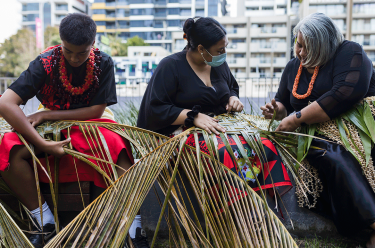“And this is what we call, area five… the Pacific Art collection”, the heavy metal doors open sending out a cool breeze. Stepping inside I remember the words of my Mum and Aunties, don’t forget to call yourself back, you don’t want to be lost in there… a warning that our soul and spirit are deeply connected to objects, and we don’t want them to hide among these shelves once they leave our bodies. I whisper my name and intentions for being in this room so as not to disturb the deep slumbers of these works. Here they sit, safely tucked away, some still holding a warm glow of objects recently embraced and exhibited.
There was something unsettling about being in that room and I’ve spent time asking my elders why I once held this feeling, that despite the undeniable beauty of these works, being in that room brought its own uneasy feeling. Maybe historically and in other institutions words and sentiments like this would best sum up the experience of being a person whose community have often been exoticised and become subjects of study, standing in a room holding some of the ‘treasures’ and ‘trophies’ of an anthropologist’s voyage.
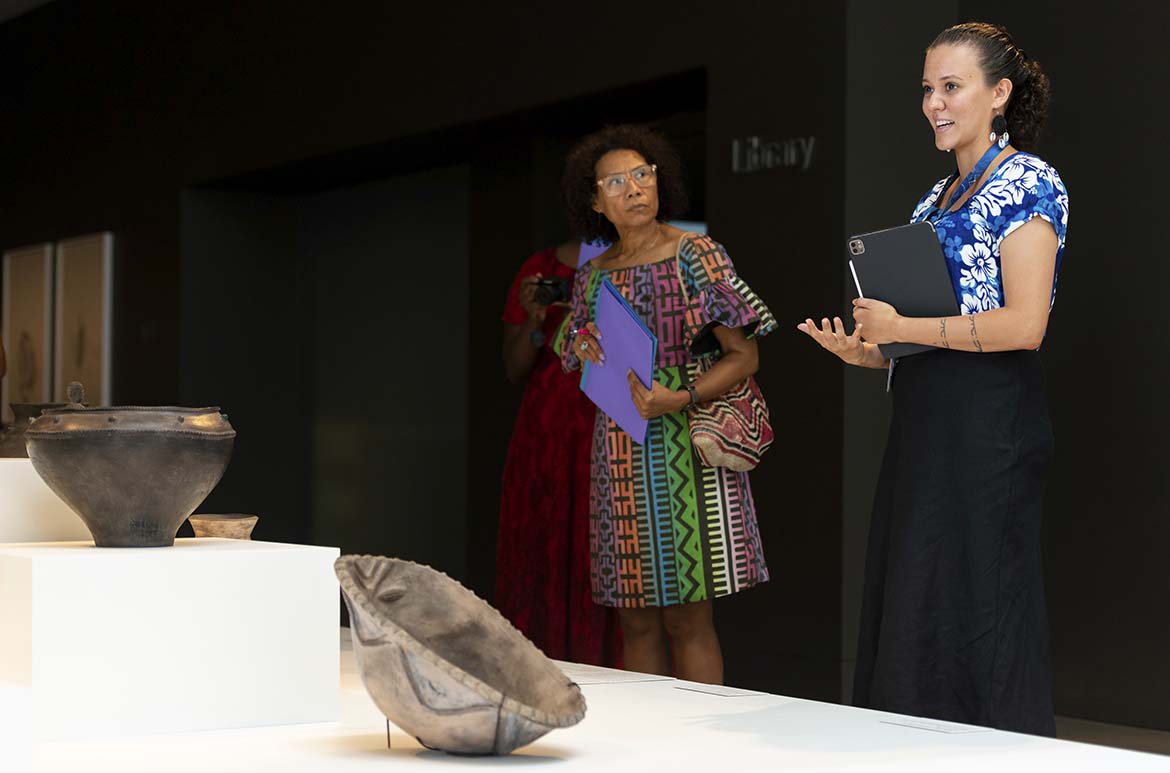
I have spent some time reflecting, asking questions, and engaging in conversations with others about how we all can feel the spirit of objects deeply in our soul; that their mana can be inherited and transmitted. Sometimes I ask these people if they also notice the warm hue that surrounds a work recently exhibited and in contrast, the darkness and shade of a work that has not been touched by familiar hands or heard the rhythm of their first language over a long period of time.
I don’t mean to tell you these sentiments to encourage anarchy or the storming down of storage facilities and institutions that exist across the globe. I share these confronting sentiments with you to remind you that communities must be engaged with these institutions and their collections at every level — not just in public engagement, but in the conservation, installation, and curatorial process. Recently, I have witnessed the way community, QAGOMA staff and other institutions foster and enrich the spirit of collections and I hope my accounts will provide peace of mind for colonised communities; that these stories will encourage other institutions that may have gatekeepers to stand away from the door and create space for us to engage with the objects in their collections that hold our living stories and histories.
Area 5
In my first week of work at QAGOMA I was shown works that were connected to my background as a Motuan woman and as a Papuan-diaspora. I was able to view a group of Motuan pots and during the production of ‘The 10th Asia Pacific Triennial of Contemporary Art’ (APT10) work closely on Bubu Mary Gole’s installation of clay pottery and figurines.
Maybe for most audiences, they only see these works as pots. But for myself, they triggered memories of time spent in my village. The taste of vegetables cooked in coconut cream with the tang of banana leaves. The smell of a burning fire, mixed with sea breeze. The sound of children playing by the shoreline, laughing as they tease each other. These memories are held in a collection storage facility, preserved and under wraps. Sometimes it does feel sad to think of them in this way, but there is a part of me grateful that they are always within reach, a place where I can trigger these memories.
Joyce Mary Arasepa Gole (Mary Gole) ‘Water storage pot – woman’s face’ 2013
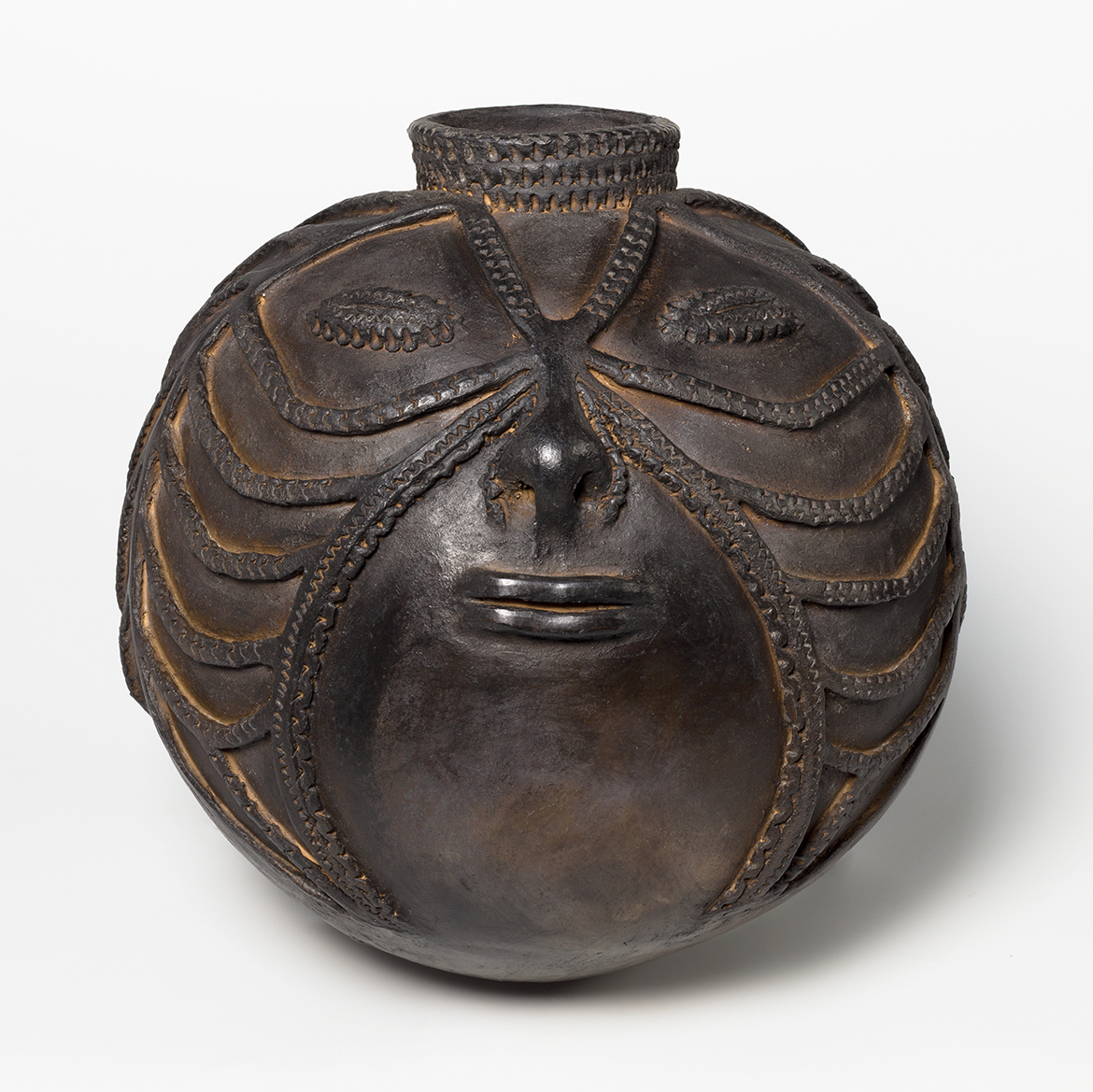
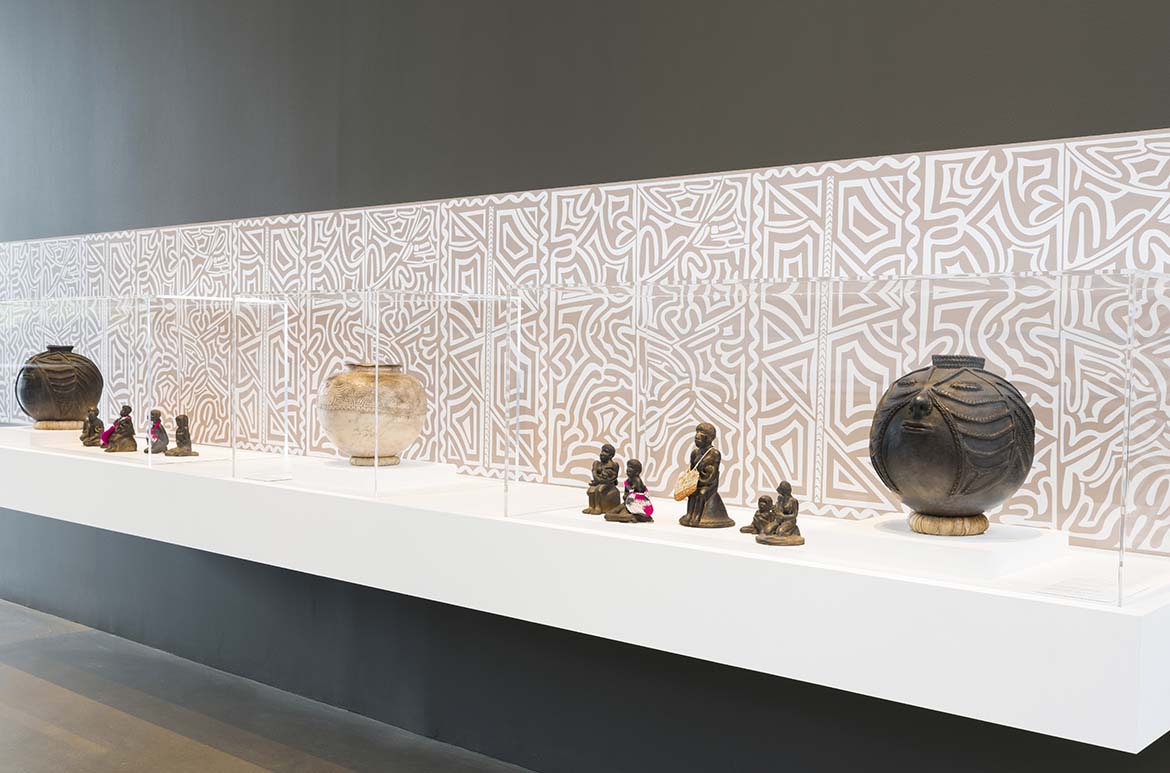
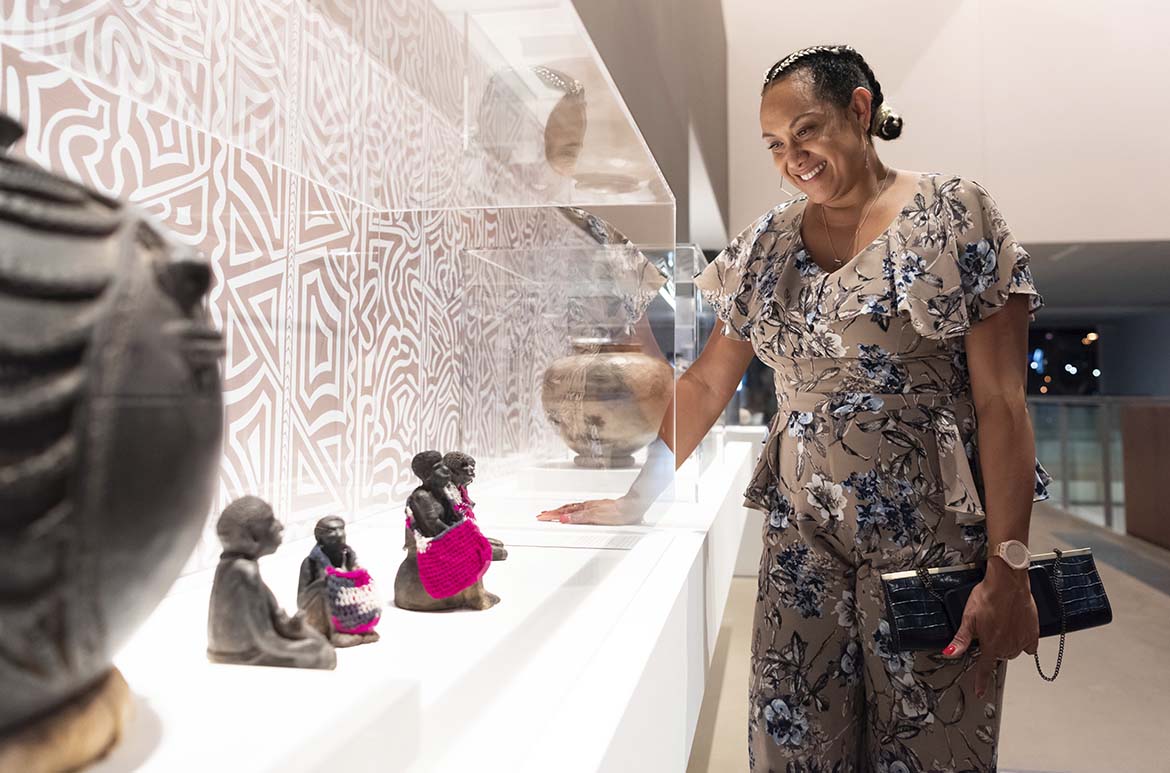
On the opening night of APT10 as I was leaving the event, my mother grabbed my arm and said, “You need to come quickly. Mary Gole’s daughter is here, and she saw the display”.
These moments as I have learned can be very anxiety inducing, for a few reasons. Obviously, you want not only the artist, but their respective communities to be proud of the work you have done to display, essentially, pieces of their identity and spirit for public viewing. You also are constantly asking yourself the question, “Are the written labels and didactics accurate?”; “Is this display conscious of cultural protocols?”; “Is the complete vision of the artist/s (or in this case, family of) complete and realised in the final display?
As I walked up to Korina the first thing she said to me was, “Mum would be so proud”,
A rush of relief and pure joy at these words. We had done it. But I must insist the only reason this could have been done was because of the ongoing relationship building by Ruth McDougall, Curator, Pacific Art, QAGOMA. I have watched McDougall communicate with all the artists and communities she works with throughout the planning of APT10. These relationships (and I must insist that is what they are called), not just a ‘transactional’ process of commissioning an artwork, for display; but exploring and developing artist visions and stories.
Now as I walk past these pots on display in APT10, it almost seems like a warm hue embraces them, like some of the other work in the collection storage room, shining from the shallowly lit corner of area five.
Maybe it is safe to assume that objects can also be re-awoken when their people lay eyes upon them and speak their language?
Transformative Experiences
Recently, Ruha Fifita, Curatorial Assistant, Pacific Art, QAGOMA and I welcomed the Pasifika Women’s Alliance to QAGOMA as an initial step in their ACE activation space. Elders and youth from six language groups walked around the exhibition to learn about specific projects, one being Air Canoe. A mother and daughter belonging to the Chuukese people of Micronesia saw the colourful array of urohs displayed along the wall in the Gallery, the mother’s excitement quite literally brought her to dance in front of the display. Songs that this family had sung since they were children echoing the walls and into the hall. Staff and public flooded toward the singing, an impromptu performance and display of joy. Again, the urohs despite their colourful display seemed to have brightened up, this familiar warm glow reflecting across the room.
The Air Canoe project
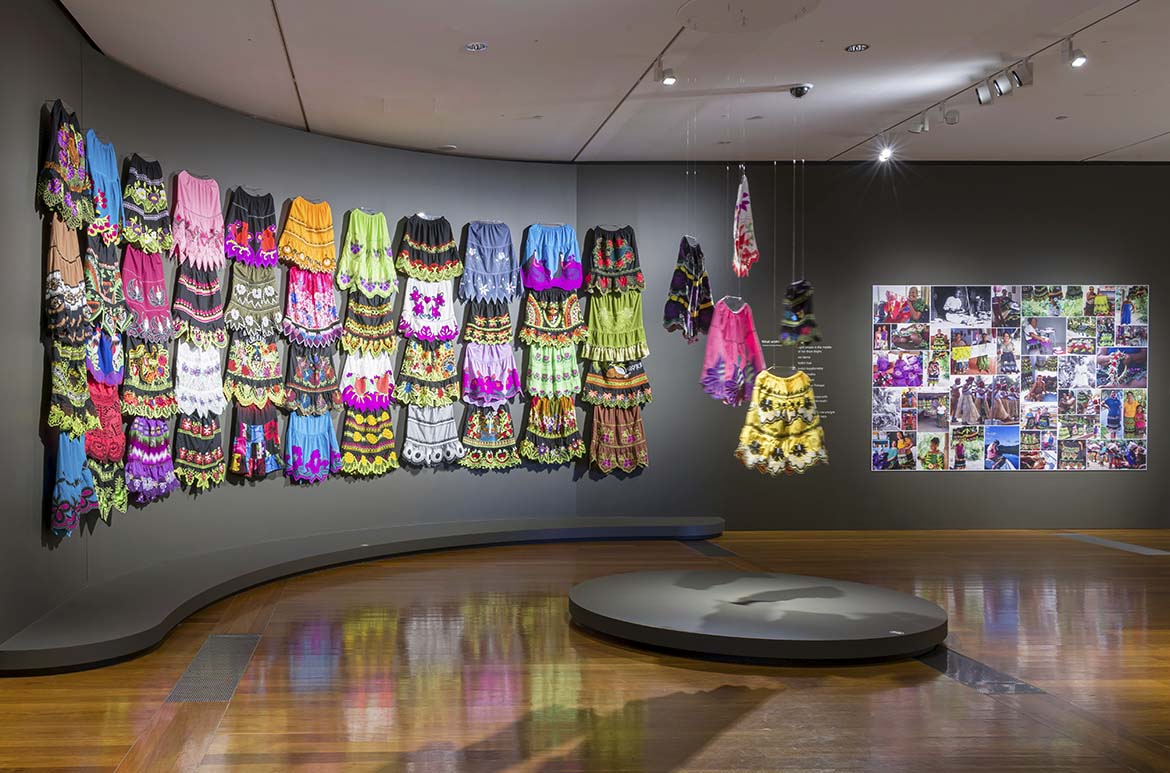

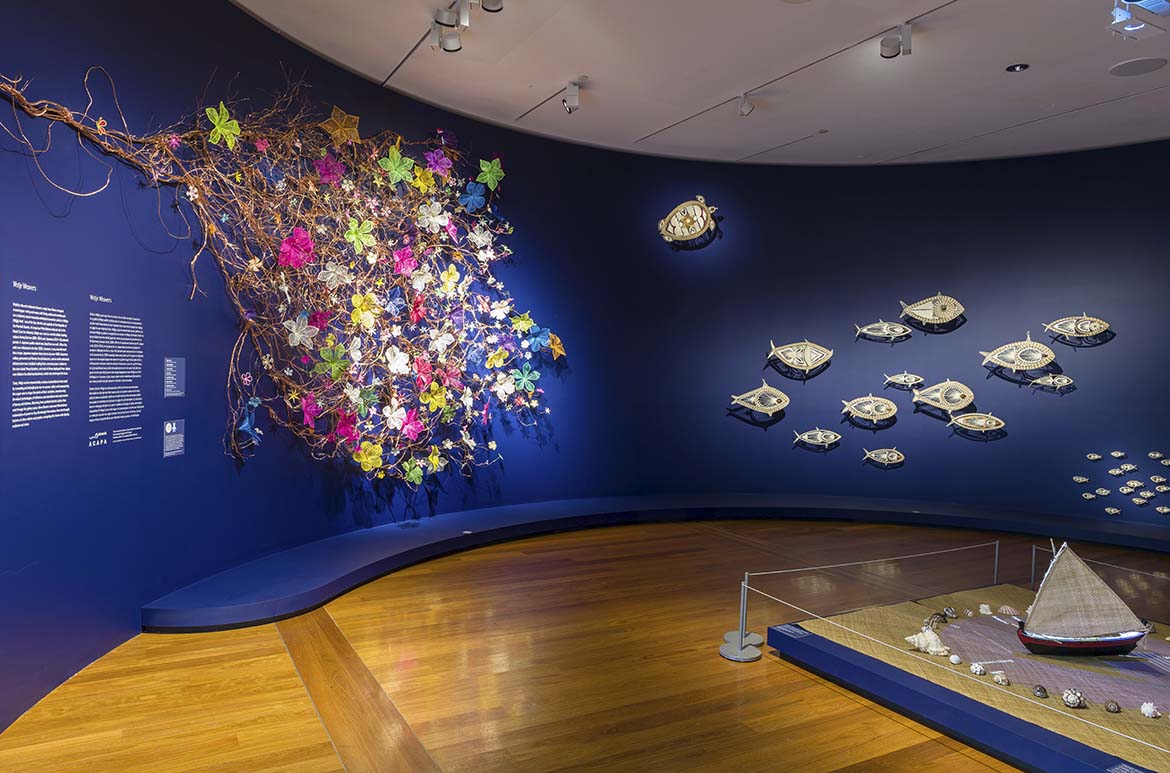
When we make a conscious effort to engage the community with their objects not just in storage but when on display it can bring forward these ‘transformative’ experiences; they can be beautiful, they can make people cry (and in-fact, the daughter on her first visit after she saw the labels in language did come to tears); it can whisk people’s memories back to islands that they often do not get to visit.
Sleeping Objects
For those that may be feeling unsettled, as someone who has had these observations and worked in this space, I want you to know that there are institutions and staff conscious of the need for this work, and there is not only a national, but global push for our communities to be present in this space. I want to commend our neighbours, the Queensland Museum in their most recent exhibition, Zenadeth Kes, for the display of the following didactic:
When an object is created, it involves the practices and teachings of the Old Ways and becomes imbued with the maker’s stories. It is difficult for objects to keep their connection to the Old Ways when they are held in museums all around the world. Under these conditions, the objects are, in effect, sleeping.
As I walked through this exhibition the warm hue, I often see at QAGOMA also exists here in the Queensland Museum. Here this didactic called out to the display, waking up these displayed objects, calling their spirits back into reality and before me the stories and memories of individuals and families – people I could connect with, even if only on a small level.
There are people enriching the spirit of the collections and this is becoming a part of working practice. Maybe in your next travels to these institutions you will recognise that warm glow attached to an object and know that the work is being done. Or maybe you might see that glow is missing and you will encourage us to find the right people to awaken those objects from their slumber.
Today, as I leave collection storage facilities, I no longer whisper my name or my language, I call out to the spirits of our objects. And as I close the door behind me a warm glow seems to grow and bounce across different shelves and corners of the room.
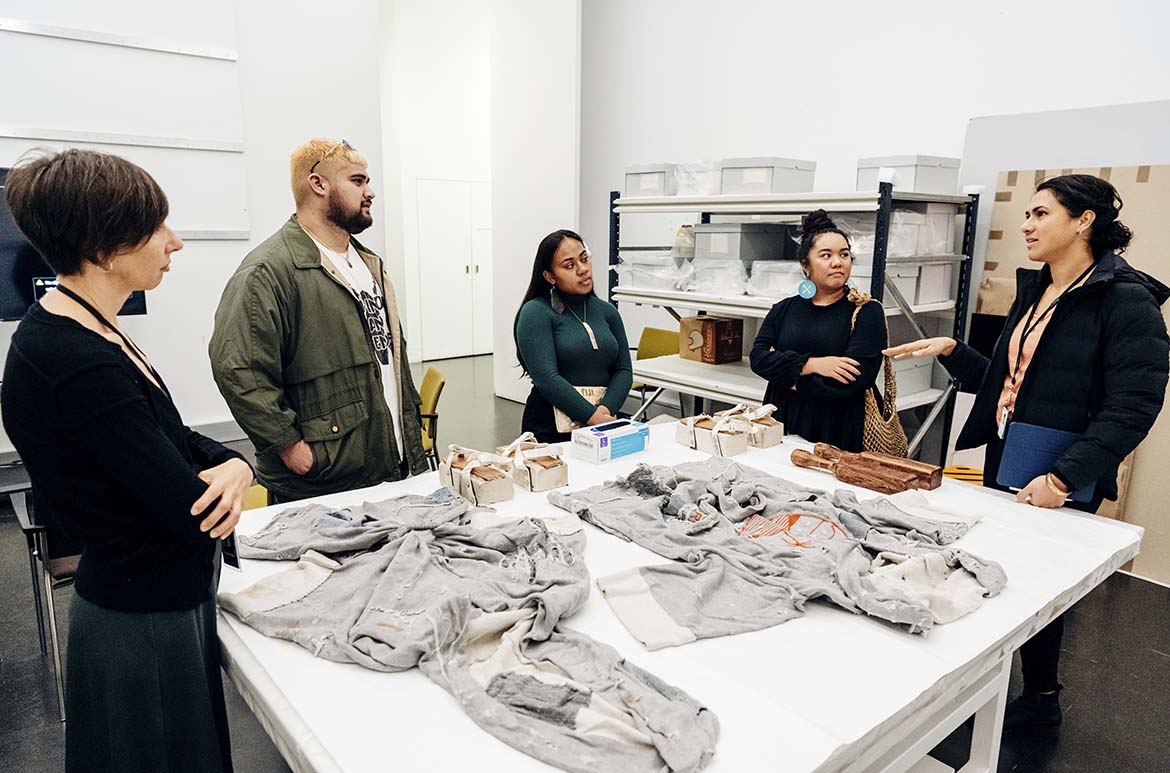
Moale James is a Darwin-born, Papua New Guinean woman, with family ties to Central Province and the Motuan people. James belongs to Gaba Gaba — an eastern coastal village in PNG — and currently lives in Kallindarbin (Ashgrove) on Turrbal Countryin Meanjin (Brisbane).
This is the second in a series of blogs on the ACAPA Community Engagement Project.
The Australian Centre of Asia Pacific Art (ACAPA) is the Queensland Art Gallery | Gallery of Modern Art’s Asian and Pacific research and publishing arm.
‘The 10th Asia Pacific Triennial of Contemporary Art’ (APT10) / Queensland Art Gallery (QAG) and Gallery of Modern Art (GOMA), Brisbane / 4 December 2021 to 25 April 2022.
The ACE Project, coordinated by Ruha Fifita (Curatorial Assistant, Pacific Art, QAGOMA), invited members of the Queensland Pasifika community to contribute to activations and projects within APT10. This project is supported by the Australian Government through the Office for the Arts.
Featured image: Joyce Mary Arasepa Gole (Mary Gole) display during APT10
#QAGOMA

